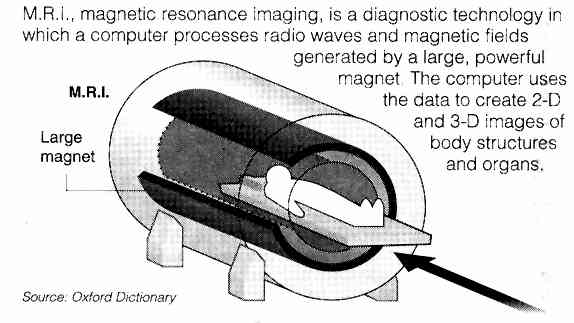Sooner or Later
Dead Wives' ClubI wouldn't be caught dead marrying a woman old enough to be my wife. - Tony Curtis Bereft Farmer Keeps Dead Wife at HomeNewcastle, South Africa - In a bizarre refusal to accept that "death us do part," a heartbroken South African farmer has for the past 12 years kept his deceased wife embalmed and on display in an air-conditioned crypt he built on his farm outside Newcastle, in northern KwaZulu-Natal. The local Sunday Times revealed yesterday that Sarel Pretorius, 73, spends much of his time in the crypt communing with Gesina, who was 49 when she died of a lung infection. He buys her gifts and plays her records. "I could not live without her so I had her embalmed," he said. "Other people bury their dead and forget about them. Here she's always with me. I have what no one else has." When Gesina died, her husband dressed her in a favourite nightie and placed a red rose with her in a wooden coffin. Then he built a 6 metre-by-8 metre crypt 5 metres below ground, with metre-thick walls. It took 14 months. Above ground there is a tombstone. The coffin lies in a corner of the tomb, which is lit and decorated with Gesina's possessions, gifts, a bible and 11 writing pads containing love letters. In the most recent he writes: "People say time heals, but they don't know what they are talking about." Part of the coffin opens to reveal Gesina's face: "I only open it on certain occasions. Her cheeks have hollowed a little and she's got thinner and darker, but her face is still perfect," Pretorius said. - The Independent Source: The Evening Post Tuesday 20 February 2001 See also:
200 Suspected Witches Killed in Congoby Smita P Nordwall Villagers have hacked to death about 200 suspected witches in rebel-held northeastern Congo since 15 June, a Ugandan army official said. The villagers blame the suspected witches for diseases that have gone untreated since Congo's war broke out 3 years ago, Brigadier Henry Tumukunde said. Ugandan troops, which had withdrawn this year from the district near the border, were sent back to the area to stop the killings and make arrests, Tumukunde said. Source: USA Today Friday 6 July 2001
Austrian Actress/Director Killed in Mysterious Gas PoisoningRotorua - The mystery of how an Austrian actress/director died from hydrogen sulphide poisoning in the Sulphur City Motel, Rotorua, on February 18 or 19, 2000, remains unsolved. The deceased was Ellen Umlauf-Rueprecht, aged 74, an actress and producer from Austria. Umlauf-Rueprecht had been visiting New Zealand as a tourist. The coroner determined that hydrogen sulphide and thiosulphate levels found in her blood were consistent with levels expected in severe hydrogen sulphide poisoning.
The unresolved question remains: How did Ellen Umlauf-Rueprecht become exposed to this extremely high and absolutely fatal level of hydrogen sulphide? It could not be determined how or why - on that particular time and in that particular place - there was a level of hydrogen sulphide gas present sufficient to cause her death. Coroner David Dowthwaite in Rotorua said, "...The potential for hydrogen sulphide poisoning is known to authorities in Rotorua..." Source: The Dominion Monday 27 November 2000 and personal correspondence
Boy, 6, Dies of Skull Injury During MRIOxygen Tank Becomes Fatal Missile in Hospitalby David W Chen Valhalla, New York - Outside of the X-ray, perhaps no other medical examination is as well known or as safe as the magnetic resonance imaging test, which is conducted eight million times a year in the United States on patients ranging from people with brain tumors to famous athletes with knee injuries. But today, officials at the Westchester Medical Center announced that something went horribly wrong on Friday with an MRI test on a boy, 6, who had just undergone surgery. Even though no metal objects are supposed to be in the testing area, because they will be pulled toward the 10-ton machine by its powerful electromagnet, a metal oxygen tank somehow made it into the examination room. The tank, about the size of a fire extinguisher, became magnetised, then flew through the air at 20 to 30 feet per second, and fractured the boy's skull. The boy died on Sunday. An autopsy conducted by the Westchester, County Medical Examiner's office confirmed that he had died of blunt force trauma, severe hemorrhaging and a contusion to the brain. The hospital and the State Department of Health are investigating, and the Westchester District Attorney's office is also reviewing the case. "It appears at this juncture that this was a tragic and very disturbing accident," said David Hebert, a spokesman for District Attorney Jeanine F Pirro. In a statement, Edward A Stolzenberg, president and chief executive of Westchester Medical Center, said that "the trauma was due to what can only be described as a horrific accident, and the entire Medical Center is grieving over the incident." He also said that the hospital "assumes full responsibility for the accident" and "will do anything it can to ease the family's grief." As of early this evening, though, very little additional information had emerged about the boy's case - including where he lived, why he was in the hospital and who brought the oxygen canister into the testing room. And there were far more questions about how a procedure considered so routine could have ended so horribly.
An MRI generates images of the body using strong magnetic fields and a computer. And since its introduction on a widespread scale within the last two decades, it has generally been considered very safe, according to Dr Emanuel Kanal, a professor of radiology and neuroradiology at the University of Pittsburgh Medical Center. Still, there have been several MRI accidents, some of them fatal, involving metal objects as small as paper clips, Dr Kanal said. One woman who underwent an MRI died because of an implanted aneurysm clip in her brain. Another who forgot to pull a hairpin out of her hair required a procedure to extract the hairpin after the pin traveled up her nose and lodged in her pharynx. And in Rochester last year, an MRI magnet pulled a .45-calibre gun out of the hand of a police officer and the gun shot a round that lodged in a wall. The accident in Westchester also comes on the heels of a recent article in The American Journal of Roentgenology about the potential dangers of oxygen tanks being brought into MRI testing areas. In that study, researchers found that there had been five such accidents in 15 years, including four in the last 3 years, mostly involving patients on life support who have been wheeled into an examination room with an oxygen tank nearby. "MRI is safe, but if something goes wrong, it can go very wrong," said Dr Gregory Chaljub, a radiologist at the University of Texas Medical Branch in Galveston and the study's primary researcher. Indeed, the power of the MRI is so strong that in one case, a janitor who was buffing the floor of the examination floor suffered a wrist fracture because of the magnetic pull on the cleaning equipment, Dr Chaljub said. The accident comes four months after Westchester Medical Center, a 1,000-bed institution that has tried in recent years to become the region's premier hospital north of New York City, was downgraded in the accreditation rankings after evaluators discovered alterations on a patient's chart. But until Friday's accident, the hospital had never had any problems stemming from its three MRI machines, which complete 3,800 MRI tests a year, said Carin Grossman, a hospital spokeswoman. The hospital suspended all MRI tests after the accident and resumed them today. It was not known why the boy was in the hospital, and Ms Grossman said that any information about the child's surgery or personal details would not be released "because of patient confidentiality." What is known is that on Friday morning, the boy, sedated, was placed inside the MRI - a General Electric Signa machine - with his head in the center of the machine. At some point, the tank was "introduced into the exam room" and, magnetised, was drawn to the center of the room, striking the boy, according to a hospital news release. It may be some time before investigators complete their work to determine what precisely happened, and who, if anyone, was to blame. But today, as word of the boy's death spread among those who administer MRI exams, the cautious consensus was that safety can never be overemphasised. Source: The New York Times Metro Tuesday 31 July 2001 For lots more on the subject of MRI injuries (along with some astonishing photos), visit simplyphysics.com.
For more on the unusual: events, abilities, means of self-expression, houses, conditions, people, luck, narrow escapes, resemblances, facts, diversions, heroism and more - click the "Up" button below to
take you to the Index page for this Odds and Oddities section. |
 Animals
Animals Animation
Animation Art of Playing Cards
Art of Playing Cards Drugs
Drugs Education
Education Environment
Environment Flying
Flying History
History Humour
Humour Immigration
Immigration Info/Tech
Info/Tech Intellectual/Entertaining
Intellectual/Entertaining Lifestyles
Lifestyles Men
Men Money/Politics/Law
Money/Politics/Law New Jersey
New Jersey Odds and Oddities
Odds and Oddities Older & Under
Older & Under Photography
Photography Prisons
Prisons Relationships
Relationships Science
Science Social/Cultural
Social/Cultural Terrorism
Terrorism Wellington
Wellington Working
Working Zero Return Investment
Zero Return Investment
